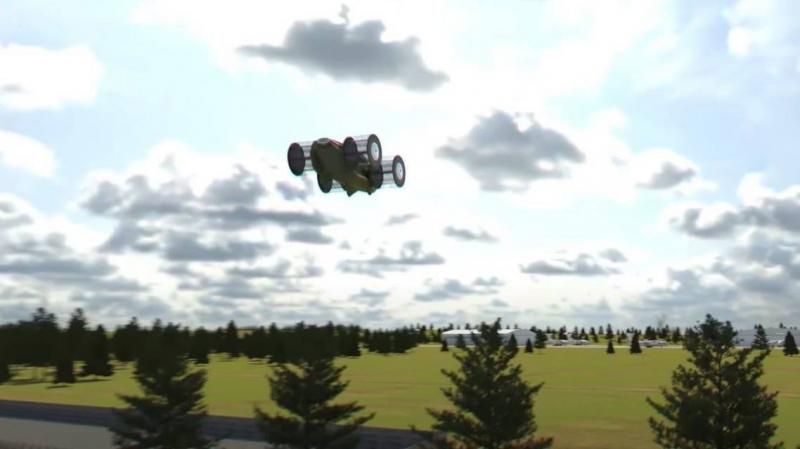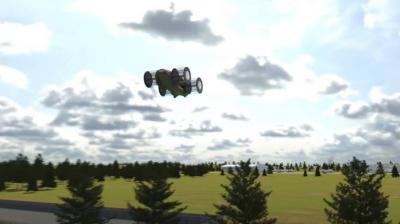The Russian Advanced Research Foundation has successfully launched a 60 kg prototype of a vertically taking off flying car, which uses a highly responsive rotary propulsion system, according to New Atlas. The full-sized, long-range Cyclocar is expected to fly in 2022, relying on a rotary propulsion system composed of multiple blades in rapidly spinning cylinders. Each blade constantly changes with the rotation of the outer cylinder, allowing the flying car to direct its orientation almost instantly in any direction 360 degrees, without needing to change speed or engine RPM.
Russian designers plan to use the rotary propulsion system in conjunction with a hybrid propulsion system that includes a full electric engine and a long-range combustion generator. The six-seat vehicle is expected to fly at speeds of up to 250 km/h, which is slightly slower than many lift and cruise designs or vehicles equipped with multi-directional propellers. It is assumed that it will not rely on wings but will need to maintain thrust directed partially downward at all times.
On the other hand, the innovative vehicle has a range of 500 kilometers thanks to the hybrid engines, and its total payload will be around 600 kg, whether in a prototype, autonomous, or remote-controlled form.
The loading ramp at the back is set to facilitate access for disabled passengers to their seats or to make cargo loading easier for civil uses. There are expected to be versions tailored for military or police use.




